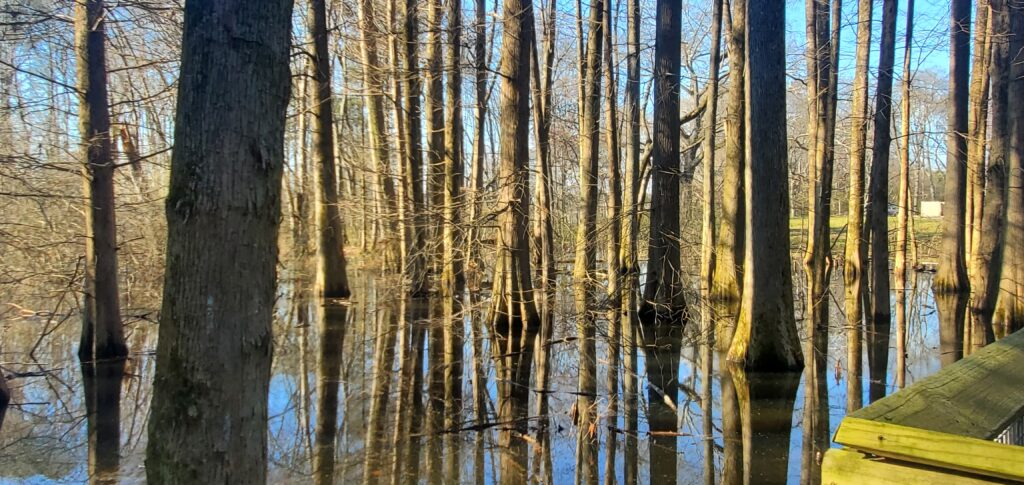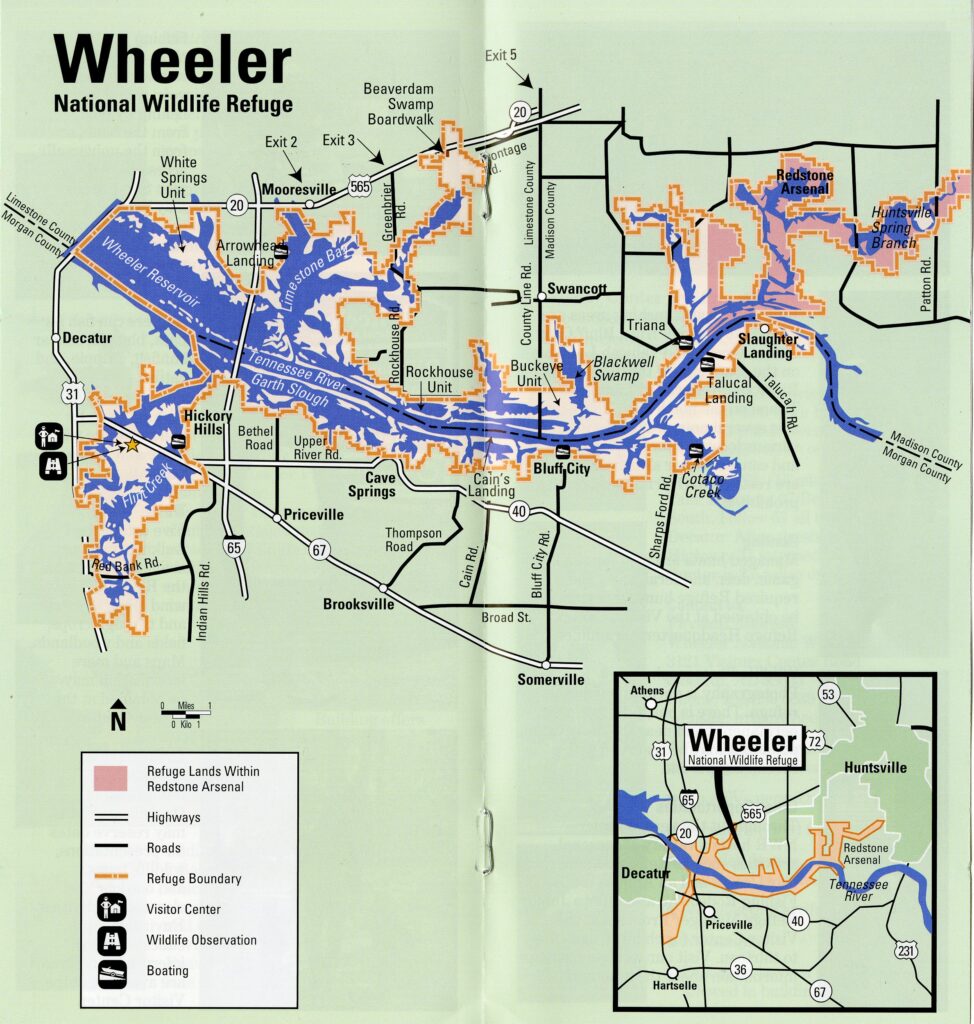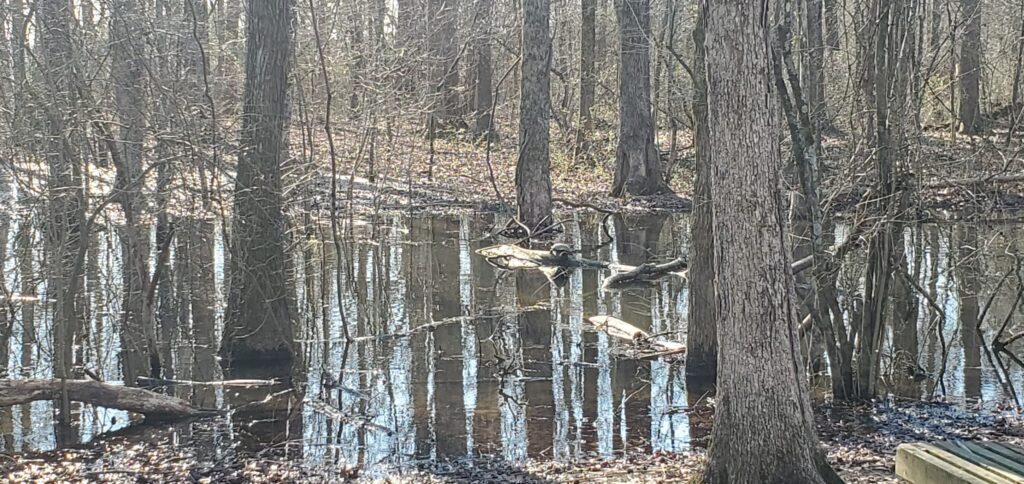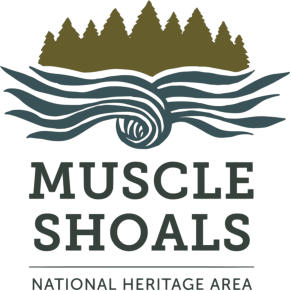By Dixie Norwood
MSNHA graduate assistant
For this post, I wanted to go outside my comfort zone and write about a place that has become a nature enthusiast’s dream here in northwest Alabama. If you know me — and I hope that after reading this, you’ll find yourself a bit more familiar with me — you know that I find being outside in nature so much better than sitting behind a desk. I absolutely love to go explore, whether that’s a well-planned-out trip or a spur-of-the-moment excursion that just popped into my head. Maybe this comes from my childhood — those days spent on the Tombigbee River in southwest Alabama soaking up every aspect of nature & listening to my dad talk about the wildlife we saw. I learned at a young age how important these times would be to me later. You see, I lost my dad when I was 12 years old, but I never forgot how lucky I was to live out some of the coolest moments with him.
here in northwest Alabama. If you know me — and I hope that after reading this, you’ll find yourself a bit more familiar with me — you know that I find being outside in nature so much better than sitting behind a desk. I absolutely love to go explore, whether that’s a well-planned-out trip or a spur-of-the-moment excursion that just popped into my head. Maybe this comes from my childhood — those days spent on the Tombigbee River in southwest Alabama soaking up every aspect of nature & listening to my dad talk about the wildlife we saw. I learned at a young age how important these times would be to me later. You see, I lost my dad when I was 12 years old, but I never forgot how lucky I was to live out some of the coolest moments with him.
I vividly remember those days like they were yesterday. We would go camping & fishing along the Tombigbee riverbanks when the weather turned the slightest bit warm. Those days were the best! There were even a few times that nature decided to catch me off guard. Hooking a 4-foot alligator on my fishing pole, having a raccoon steal my Fritos & more than likely having a snapping turtle try to bite me while I swam were just some of the exciting moments I experienced.
 From those days and nights on the Tombigbee, I never imagined that adult life would become so hectic & chaotic, all work & no play! This brings me to my focus for this post (excuse all my ramblings): an afternoon excursion to check out Wheeler National Wildlife Refuge, in Decatur, along the Tennessee River. I’ve wanted to check this place out since I moved to north Alabama three years ago but just had not found the time. Sensing I was having a “spring fever” moment during one of the warm days we experienced a few weeks ago, I decided it was the right moment. I hopped in my car & traveled the roughly hour-long trip, wondering what exactly I would see when I reached my destination. Would this “refuge” be like the wildlife refuge I became familiar with as a young girl? The anticipation became a little overwhelming yet, at the same time, invigorating.
From those days and nights on the Tombigbee, I never imagined that adult life would become so hectic & chaotic, all work & no play! This brings me to my focus for this post (excuse all my ramblings): an afternoon excursion to check out Wheeler National Wildlife Refuge, in Decatur, along the Tennessee River. I’ve wanted to check this place out since I moved to north Alabama three years ago but just had not found the time. Sensing I was having a “spring fever” moment during one of the warm days we experienced a few weeks ago, I decided it was the right moment. I hopped in my car & traveled the roughly hour-long trip, wondering what exactly I would see when I reached my destination. Would this “refuge” be like the wildlife refuge I became familiar with as a young girl? The anticipation became a little overwhelming yet, at the same time, invigorating.
What an afternoon it was to do a little sight-seeing there! I never imagined learning & viewing as much as I did in just a short time. Here’s a little backstory for the creation of this wonderful wildlife refuge:
Wheeler National Wildlife Refuge, nestled along the Tennessee River near Decatur, is a natural wonderland & the first national wildlife refuge to be overlaid on a multi-purpose reservoir. After Pres. Franklin Roosevelt authorized the Tennessee Valley Authority in 1933, the public corporation began buying land & building dams in the Tennessee Valley to fulfill its mission of controlling floods & providing hydroelectric power. In the mid-1930s, TVA completed Wheeler Dam & the accompanying Wheeler Reservoir. In 1938, Roosevelt established buffer areas around the reservoir as a refuge for migratory waterfowl & other wildlife. For the last 84 years, this area has been a stopping point & home for thousands of birds & wildlife species. Bird lovers as well as photographers & families come to the refuge every year — the refuge estimated 700,000 people visited in 2019.
refuge to be overlaid on a multi-purpose reservoir. After Pres. Franklin Roosevelt authorized the Tennessee Valley Authority in 1933, the public corporation began buying land & building dams in the Tennessee Valley to fulfill its mission of controlling floods & providing hydroelectric power. In the mid-1930s, TVA completed Wheeler Dam & the accompanying Wheeler Reservoir. In 1938, Roosevelt established buffer areas around the reservoir as a refuge for migratory waterfowl & other wildlife. For the last 84 years, this area has been a stopping point & home for thousands of birds & wildlife species. Bird lovers as well as photographers & families come to the refuge every year — the refuge estimated 700,000 people visited in 2019.
Although I missed the peak migration time for many of the waterfowl that stop here, I was able to view a few herons, some baby ducks & a few robins and redbirds (or cardinals). I even glimpsed of a few turtles sunning on a couple logs, a beautiful yellow butterfly, a startled rabbit & some mischievous gray squirrels.
A few “fun facts” I learned while I was lingering around the grounds (and in the Visitor Center and the Wildlife Observation area):
- There are 35,000 acres associated with Wheeler National Wildlife Refuge.
- An endangered species of waterfowl known as the whooping crane has made north Alabama a stopping point since 2004. These birds usually appear in the winter months.
- The refuge manages & protects 10-13 federally listed endangered or threatened species.
- If you are a bird lover or watcher like I am slowly becoming, you should know that the visitor center at the refuge is where the North Alabama Birding Trail begins. This trail covers three different sections, or loops, in north Alabama.
- Wheeler Wildlife Refuge is one of over 500 refuges in the National Wildlife Refuge System, administered by the U.S. Fish and Wildlife Service.
- If you enjoy nature trails, there are five trails you can walk or hike at Wheeler Refuge. In my next blog post, I’ll include information & photos from one of these trails.
 My visit was cut short because I arrived about an hour and a half before closing time. I look forward to coming back & enjoying another outing at Wheeler National Wildlife Refuge soon. Note the refuge is undergoing renovations through October. The Visitor Center (including the grounds, parking lot, Observation Building & Atkeson Boardwalk/Trail) will be closed until Oct. 31. In-person visitor services aren’t available during this time. Refuge information, maps & trail guides are at the kiosk outside of the visitor center front gate. For details, call (256) 350-6639, Monday-Friday, from 9 a.m. to 4 p.m. or visit the refuge website.
My visit was cut short because I arrived about an hour and a half before closing time. I look forward to coming back & enjoying another outing at Wheeler National Wildlife Refuge soon. Note the refuge is undergoing renovations through October. The Visitor Center (including the grounds, parking lot, Observation Building & Atkeson Boardwalk/Trail) will be closed until Oct. 31. In-person visitor services aren’t available during this time. Refuge information, maps & trail guides are at the kiosk outside of the visitor center front gate. For details, call (256) 350-6639, Monday-Friday, from 9 a.m. to 4 p.m. or visit the refuge website.
Make plans to check out this fantastic natural paradise. You won’t be disappointed
More information is at www.stateparks.com/wheeler_national_wildlife_refuge_in_alabama.html, www.alabamabirdingtrails.com/sites/wheeler-national-wildlife-refuge-visitor-center, or www.fws.gov/refuge/wheeler.





